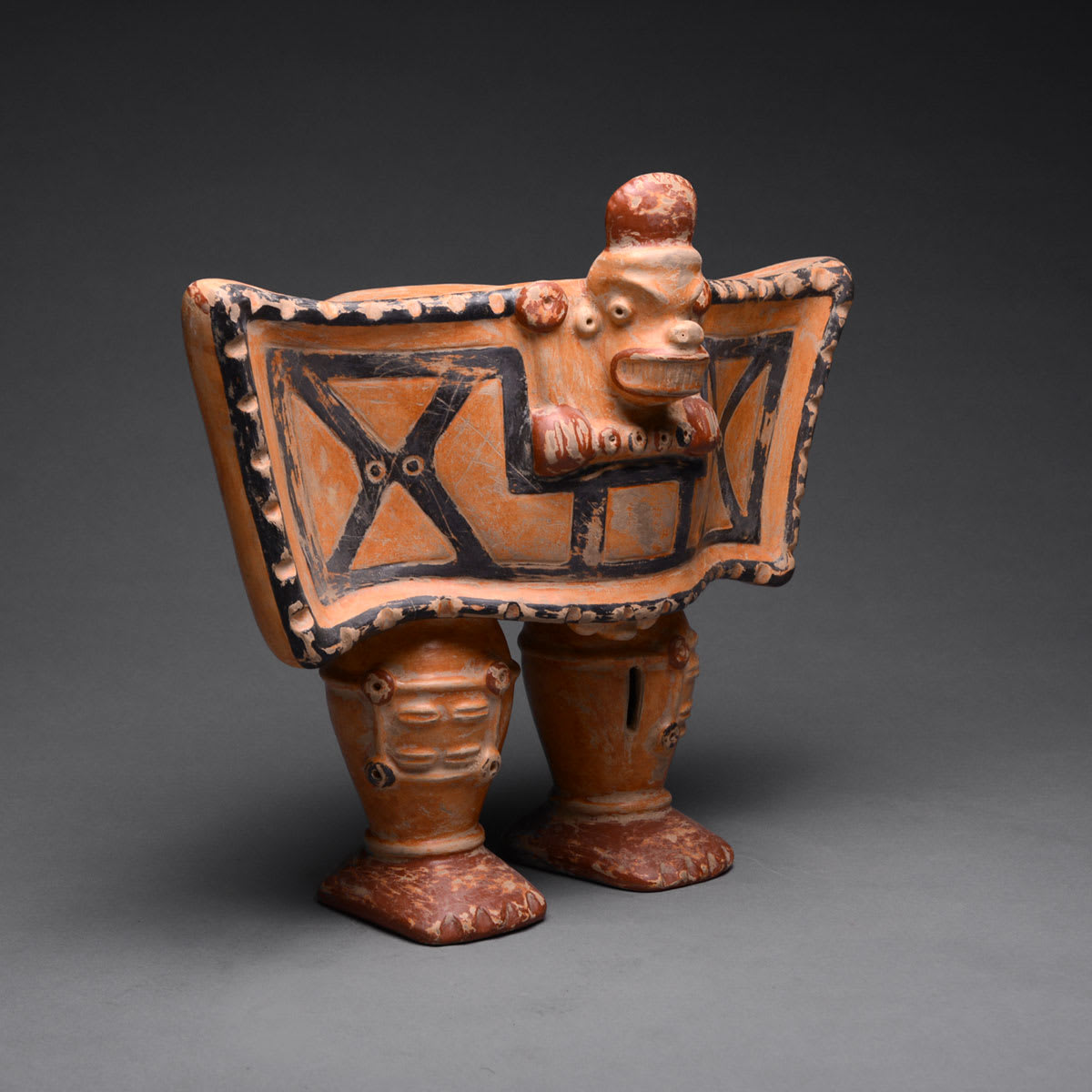Galo Polychrome Zoomorphic Vessel, 500 CE - 1000 CE
Terracotta
33.3 x 28.6 cm
13 1/8 x 11 1/4 in
13 1/8 x 11 1/4 in
PF.3616
Further images
This zoomorphic vessel depicting a bat/crocodile image comes from the Guanacaste-Nicoya polychrome tradition, the Galo polychrome style. Its mirror-bright burnished surfaces are technically unsurpassed by any Pre-Columbian pottery, and yellows,...
This zoomorphic vessel depicting a bat/crocodile image comes from the Guanacaste-Nicoya polychrome tradition, the Galo polychrome style. Its mirror-bright burnished surfaces are technically unsurpassed by any Pre-Columbian pottery, and yellows, reds, oranges, and creams. Maroons, and blacks of the polychrome decorations are impressively vivid. Among such sculptures are the vessels with symbolic zoomorphic appliqués and patterns, representing various deities. Such brilliant polychrome tradition represent an important social dimension; when the northern trade network that brought jade, slate-backed pyrite mirrors, foreign ceramics, and other luxury goods, the Nicoyans responded by producing their own special purpose pottery. Inspired by northern models, it also incorporated local and southern elements, forming a dazzling hybrid style that was traded around Central America and southern Meso-America in the centuries to come. Supported by large feet and legs, this magnificent vessel radiates with its bright colors. The legs are decorated with patterned marks, possibly representing signs of a crocodile. The upper part of the vessel is intricately sculpted, depicting an appliqué image of a bat/crocodile with its "wings" spread. The stylized "wings" are outlines with black paint, and the face of the figure is placed within the rectangular form. The face seems to be a crocodile/bat, two animals that are often shown in Costa Rican art. Both creatures were revered and worshiped as deities, and accordingly, the figure is depicted with an elaborate headdress. The "wings" form the container portion and we wonder what this vessel once held. The vibrant, colorful vessel seems to bring the ancient magic and mystery to us in an instant.
Literature
V16







